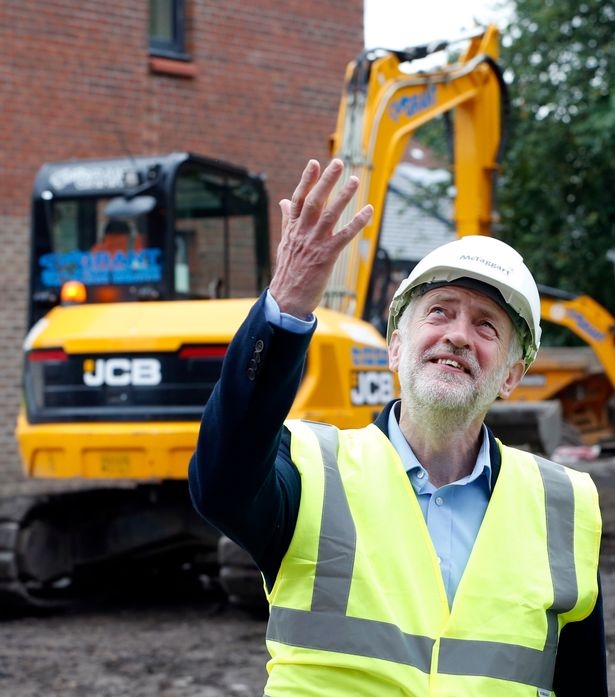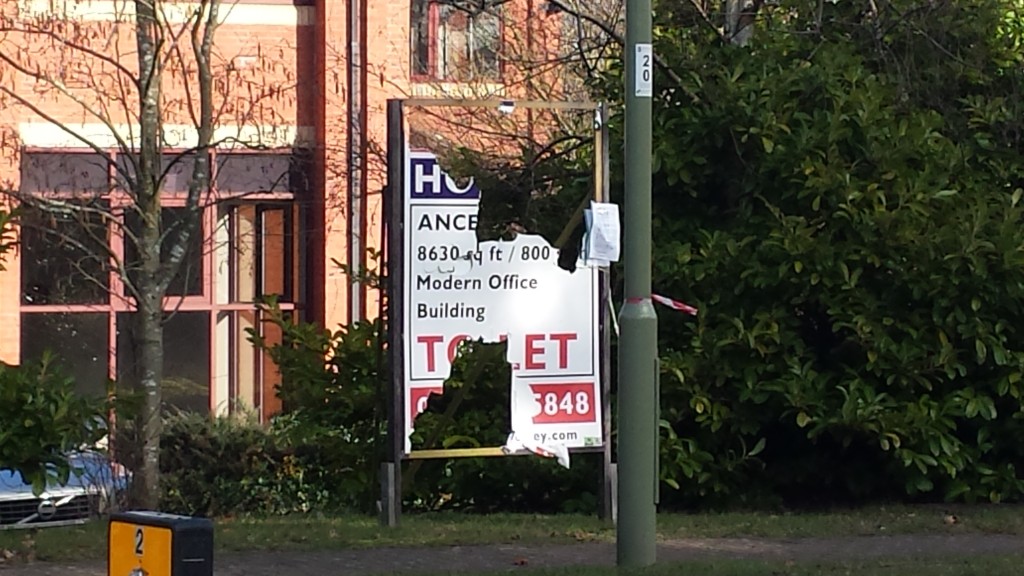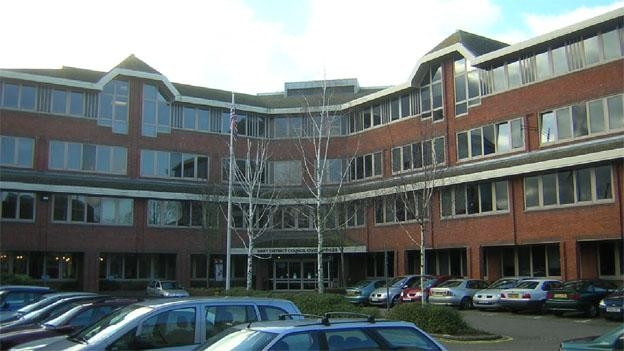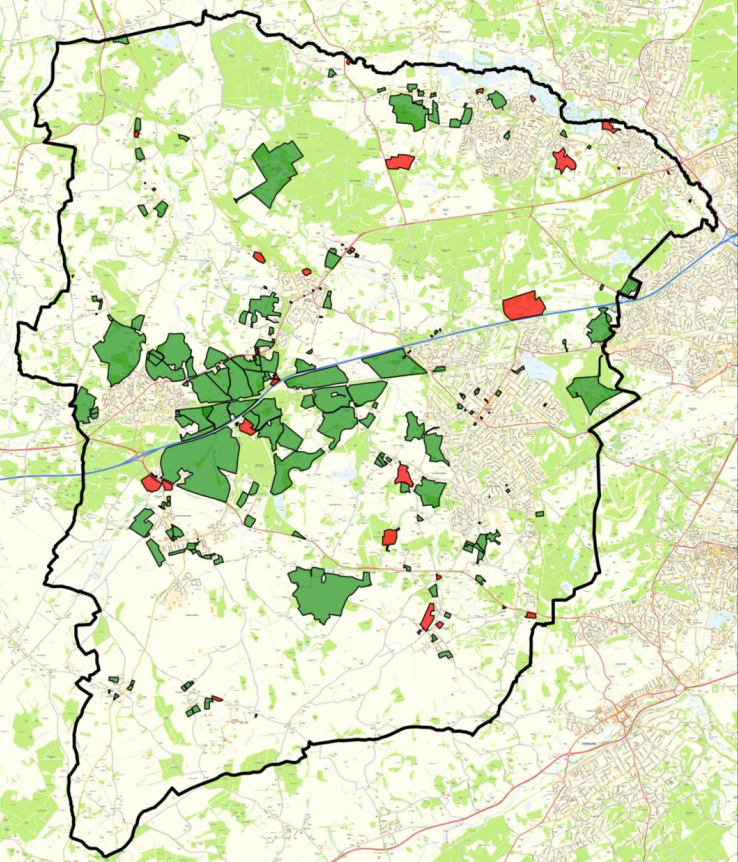
Hart Housing threat: sites under consideration
Overshadowed by our earlier story of CCH further delaying the Hart Local Plan was the news of the new Hart housing threat of our target being raised from 7,500 to over 10,000 new houses up to 2032. This comes on top of the potential financial costs of delay.
Details of how this has come about are sketchy. It is related to how Hart should respond to Government rules about how to deal with affordable housing. We understand Hart Council is working on a ‘topic paper’ to give a further explanation.
We have analysed the impact of this new target below. Sadly, most of the large, sensitive green field sites are potentially under threat once again. In addition, it is likely that Hart would no longer have more than five years of land supply. This exposes us to the threat of speculative planning applications. If most of these additional houses end up being ‘affordable’, they won’t attract contributions from developers to fund vital infrastructure.
So, we have come to the conclusion that it is time for all the politicians and pressure groups to work together to fight off this new threat rather than spend their time arguing over where the new houses should go. This level of development will mean that substantially all of the district will be under threat for some time. Moreover, this increased rate of building will be carried forward into the new planning period making things even worse for decades to come. We need to demand three key actions:
- The councillors need to stop squabbling and get a Local Plan in place ASAP
- Challenge robustly this new housing target and get the ridiculous new Government rules changed
- Pressure the council to properly examine the brownfield options for the district, complete their brownfield study and bring these sites forward instead of the precious green field sites.
Impact of the Hart housing threat on sensitive sites
First we take a look at where we would need to build to meet this new target and compare it to last year’s consultation; the most recent land supply position and our estimate of a ‘fair’ housing target.
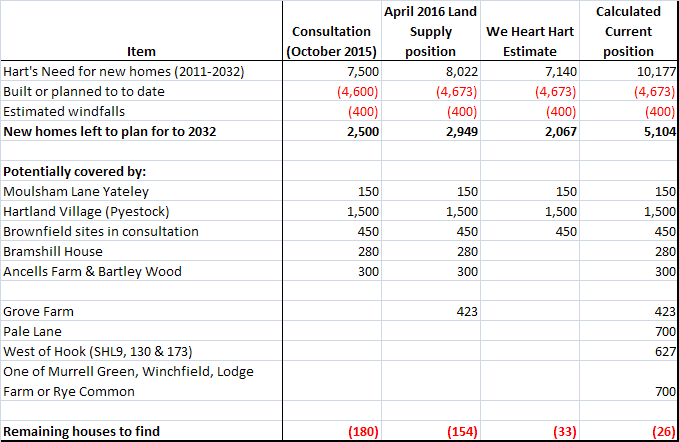
Impact of new Hart housing threat on sensitive sites
As can be seen above, if the housing target remains around current levels, our remaining housing needs can easily be met from brownfield sites such as Hartland Village (Pyestock), the sites Hart Council identified in the consultation, Bramshill House and some further redevelopment of Ancells Farm and Bartley Wood. Moulsham Lane, Yateley was given the go ahead at appeal over the summer.
For some reason related to the Hop Garden Road appeal, Hart decided to increase our housing requirement up to 8,022 houses. This is achievable from the 4,000 units we have identified on brownfield sites. But the planners would need to be persuaded to:
- Redevelop the area around the Harlington and Hart’s offices in Fleet for mixed use.
- Bring the many other smaller borwnfield sites across the district into the equation.
Failing that, it is inevitable that one of the green field sites is chosen. For the purposes of this analysis we have used Grove Farm/ Netherhouse Copse as that is up for determination at the moment and the officers have recommended it.
Our estimate of a ‘fair’ housing target is based on the work of Alan Wenban-Smith. This starts with the population projections which on their own would generate a housing need of 5,040 houses over the planning period. A generous allowance is then added for additional economic growth to arrive at a need of 7,140 houses. This is easily achievable on brownfield sites, with some left over for future periods. Note that the new housing target is twice the level of housing required to meet the projected population forecasts.
The new target of 10,177 houses makes it much more difficult to achieve on brownfield. Again, the brownfield capacity could be larger than indicated above if the councillors and planners were to finally deliver on their brownfield study. If they don’t, it is inevitable that most of the sensitive green field sites including Pale Lane (Elvetham Chase), the land west of Hook and one or more of Murrell Green, Winchfield, Lodge Farm or Rye Common come into the equation. As you can see this new housing target will impact everyone.
Impact of Hart housing threat on the land supply
In the absence of the Hart Local Plan and up to date policies, the only defence we have against voracious developers is the five year land supply. This gives some limited control over speculative planning applications. So, we have taken a look at what the new target will mean for our five year land supply.
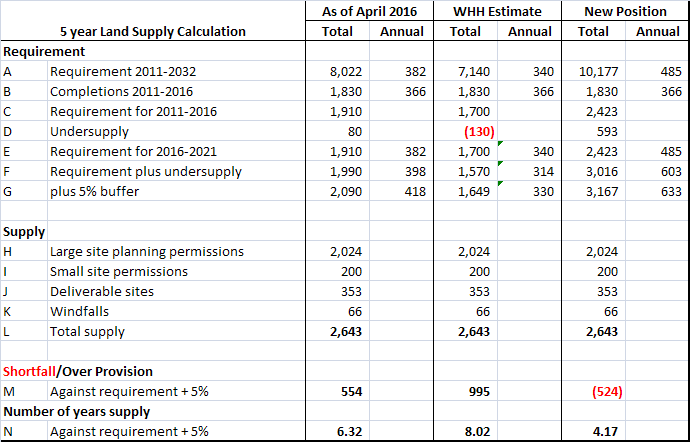
Impact of new housing target on Hart District 5 year land supply
The left hand columns show the current 5-year land supply that Hart Council use. This shows we are in the relatively comfortable position with over 6 years land supply. If We Heart Hart’s fair housing target was adopted this would rise to 8 years supply.
However, the new housing target would reduce our land supply to below the crucial 5-year threshold leaving Hart very exposed. We would need another 525 additional houses to be granted permission ASAP to bring us back over the threshold.
Conclusion
We are in a very serious position with many of our cherished green fields under grave threat from speculative planning applications. There is no Local Plan and our policies are out of date. Hart is running an infrastructure funding deficit of £78m. The new housing target is double what we need to meet the official Government population forecasts. If the new housing target is adopted, Hart will no longer have a five year land supply. Unless we change tack, all our green fields will be concreted over and lost forever.
To preserve all that makes Hart such a great place to live we need to take serious action:
- The councillors need to stop squabbling and get a Local Plan in place ASAP
- We need to challenge robustly this new housing target and get the ridiculous new Government rules changed
- We need to pressure the council to properly examine the brownfield options for the district, complete their brownfield study and bring these sites forward instead of the precious green field sites.
This can only be done by everyone with a stake in Hart housing development working together to get the best outcome for Hart.





